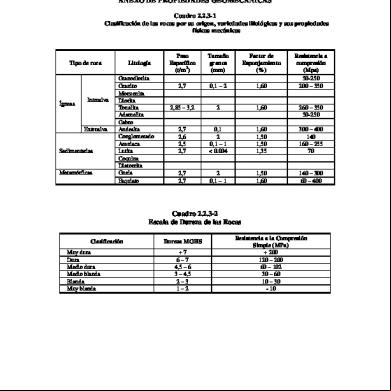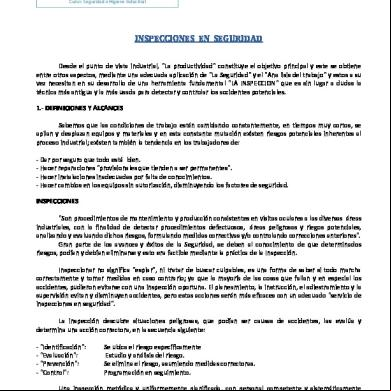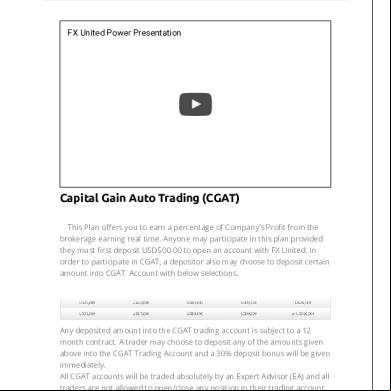Assignment 1.pdf 3z6w3h
This document was ed by and they confirmed that they have the permission to share it. If you are author or own the copyright of this book, please report to us by using this report form. Report 3b7i
Overview 3e4r5l
& View Assignment 1.pdf as PDF for free.
More details w3441
- Words: 421
- Pages: 3
E522 (TRANSPORT PHENOMENA) ASSIGNMENT 1 1.
Newton's law of viscosity, Fourier's law of thermal conduction and Fick's law of diffusion are analogs of transport phenomena. Identify what is being transported and the driving potentials for each transport.
2.
An incompressible Newtonian fluid flow through a horizontal circular tube as shown in Figure 1. Assume that the fluid flow is laminar and under steady state conditions.
Figure 1 Laminar flow in a horizontal pipe Derive the velocity distribution of the fluid, Appendix 1. You may neglect gravity. 3.
as a function of r using equation of motion in
A Newtonian fluid (of constant density ρ) flow in a tube of circular cross section, inclined at an angle α to the vertical as shown in Figure 2. End effects may be neglected because the tube length L is relatively very large compared to the tube radius R. The fluid flows under the influence of both a pressure difference Δp and gravity.
α
Figure 2 Fluid flow in circular tube. Derive the velocity distribution of the fluid,
as a function of r using equation of motion in
Appendix 1. 4.
A incompressible fluid of density ρ is in laminar flow in a plane narrow slit of length L and width W that formed by two flat parallel walls with a distance 2B apart. End effects may be neglected because B << W << L. The fluid flows under the influence of both a pressure difference Δp and gravity.
Figure 3 Fluid flow in plane narrow slit. i. ii.
List your postulate. Establish the following expression for the steady-state shear stress distribution and the velocity profile for a Newtonian fluid (of constant viscosity μ) using equation of motion in Appendix 1.
vz 5.
0 L 2 B x2 2L
Consider the flow depicted in the schematic below. Flow takes place in the narrow space between two very wide and very long plates. The flow i driven by an imposed pressure, which is higher upstream (P0) than a distance L downstream (PL). The flow is steady, well developed, and we are considering the region only far from all edges. The fluid is an incompressible, Newtonian fluid. For full credit you will need to correctly indicate the assumptions you used in arriving at your answers.
(a) Derive the distribution of the fluid, vx as a function y using equation of motion and momentum shell balance equation. (b) What are the velocity and pressure boundary conditions for this flow?
Due 25/4/2016 before 4pm
Newton's law of viscosity, Fourier's law of thermal conduction and Fick's law of diffusion are analogs of transport phenomena. Identify what is being transported and the driving potentials for each transport.
2.
An incompressible Newtonian fluid flow through a horizontal circular tube as shown in Figure 1. Assume that the fluid flow is laminar and under steady state conditions.
Figure 1 Laminar flow in a horizontal pipe Derive the velocity distribution of the fluid, Appendix 1. You may neglect gravity. 3.
as a function of r using equation of motion in
A Newtonian fluid (of constant density ρ) flow in a tube of circular cross section, inclined at an angle α to the vertical as shown in Figure 2. End effects may be neglected because the tube length L is relatively very large compared to the tube radius R. The fluid flows under the influence of both a pressure difference Δp and gravity.
α
Figure 2 Fluid flow in circular tube. Derive the velocity distribution of the fluid,
as a function of r using equation of motion in
Appendix 1. 4.
A incompressible fluid of density ρ is in laminar flow in a plane narrow slit of length L and width W that formed by two flat parallel walls with a distance 2B apart. End effects may be neglected because B << W << L. The fluid flows under the influence of both a pressure difference Δp and gravity.
Figure 3 Fluid flow in plane narrow slit. i. ii.
List your postulate. Establish the following expression for the steady-state shear stress distribution and the velocity profile for a Newtonian fluid (of constant viscosity μ) using equation of motion in Appendix 1.
vz 5.
0 L 2 B x2 2L
Consider the flow depicted in the schematic below. Flow takes place in the narrow space between two very wide and very long plates. The flow i driven by an imposed pressure, which is higher upstream (P0) than a distance L downstream (PL). The flow is steady, well developed, and we are considering the region only far from all edges. The fluid is an incompressible, Newtonian fluid. For full credit you will need to correctly indicate the assumptions you used in arriving at your answers.
(a) Derive the distribution of the fluid, vx as a function y using equation of motion and momentum shell balance equation. (b) What are the velocity and pressure boundary conditions for this flow?
Due 25/4/2016 before 4pm











